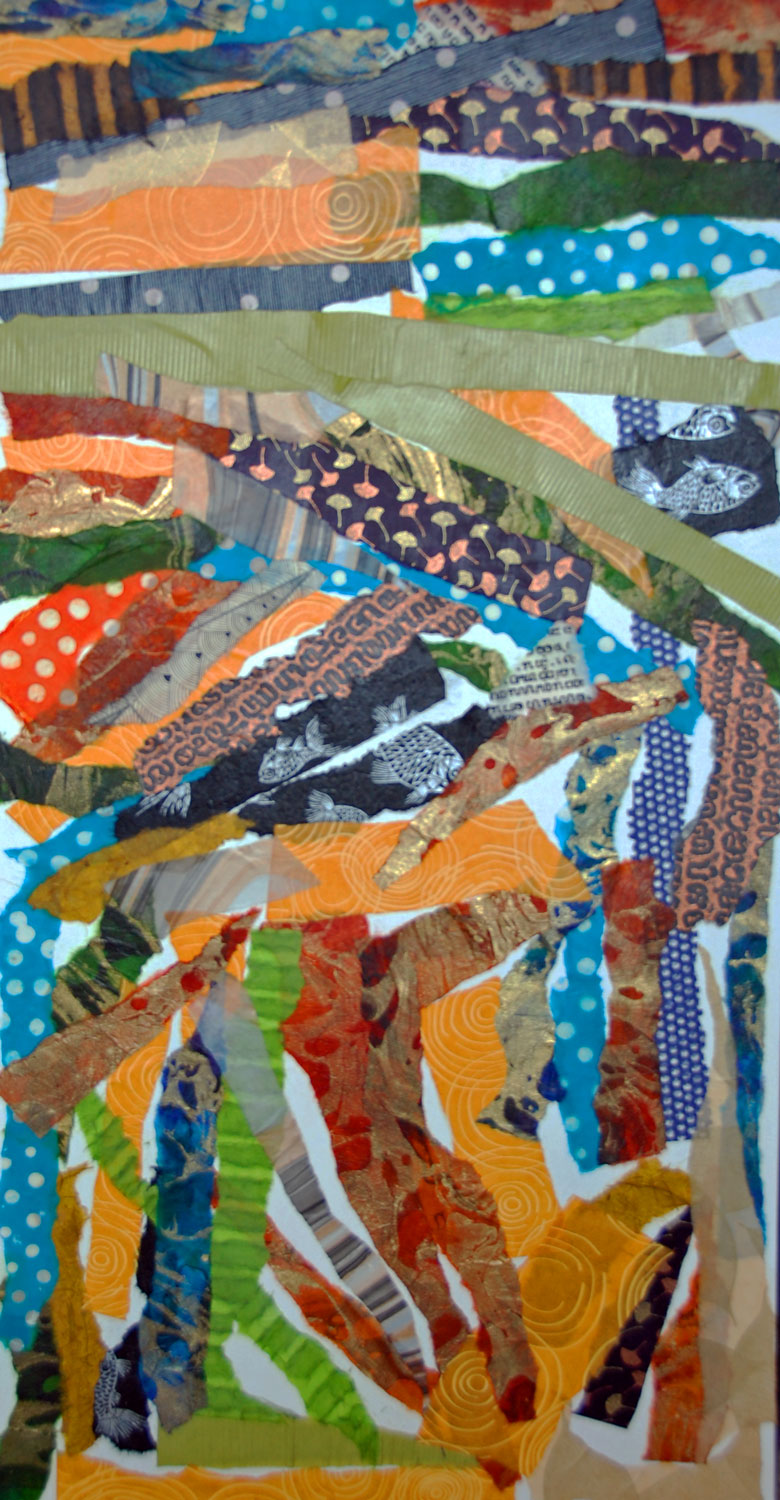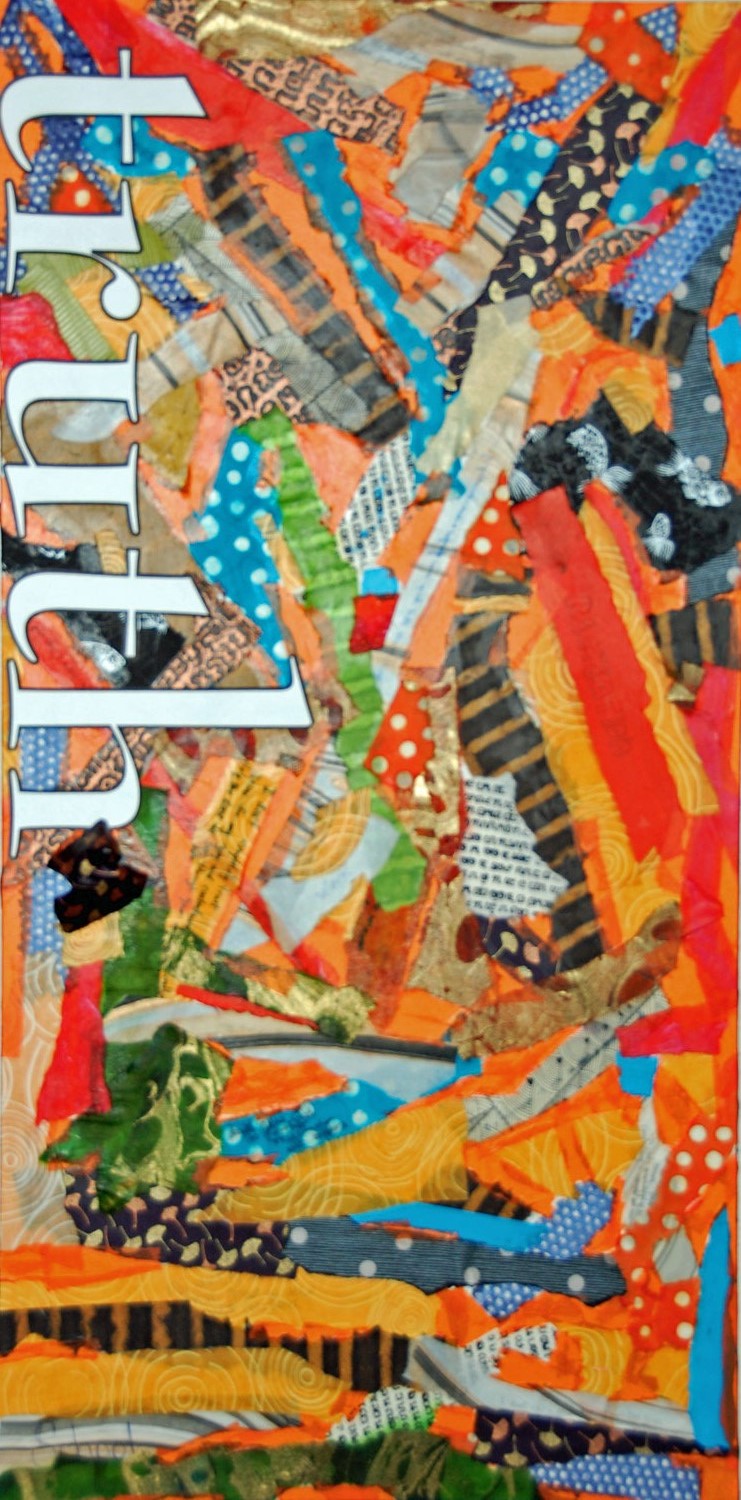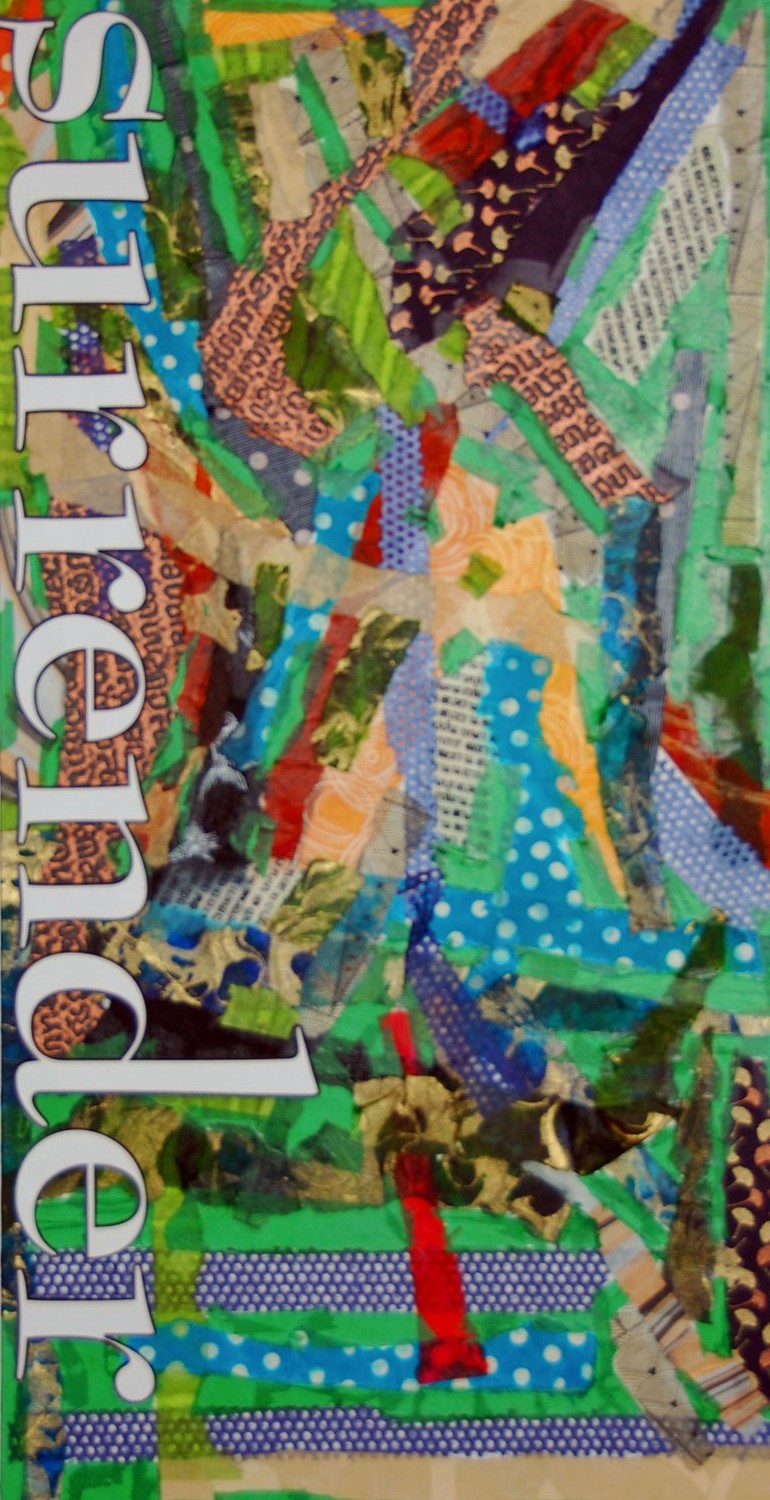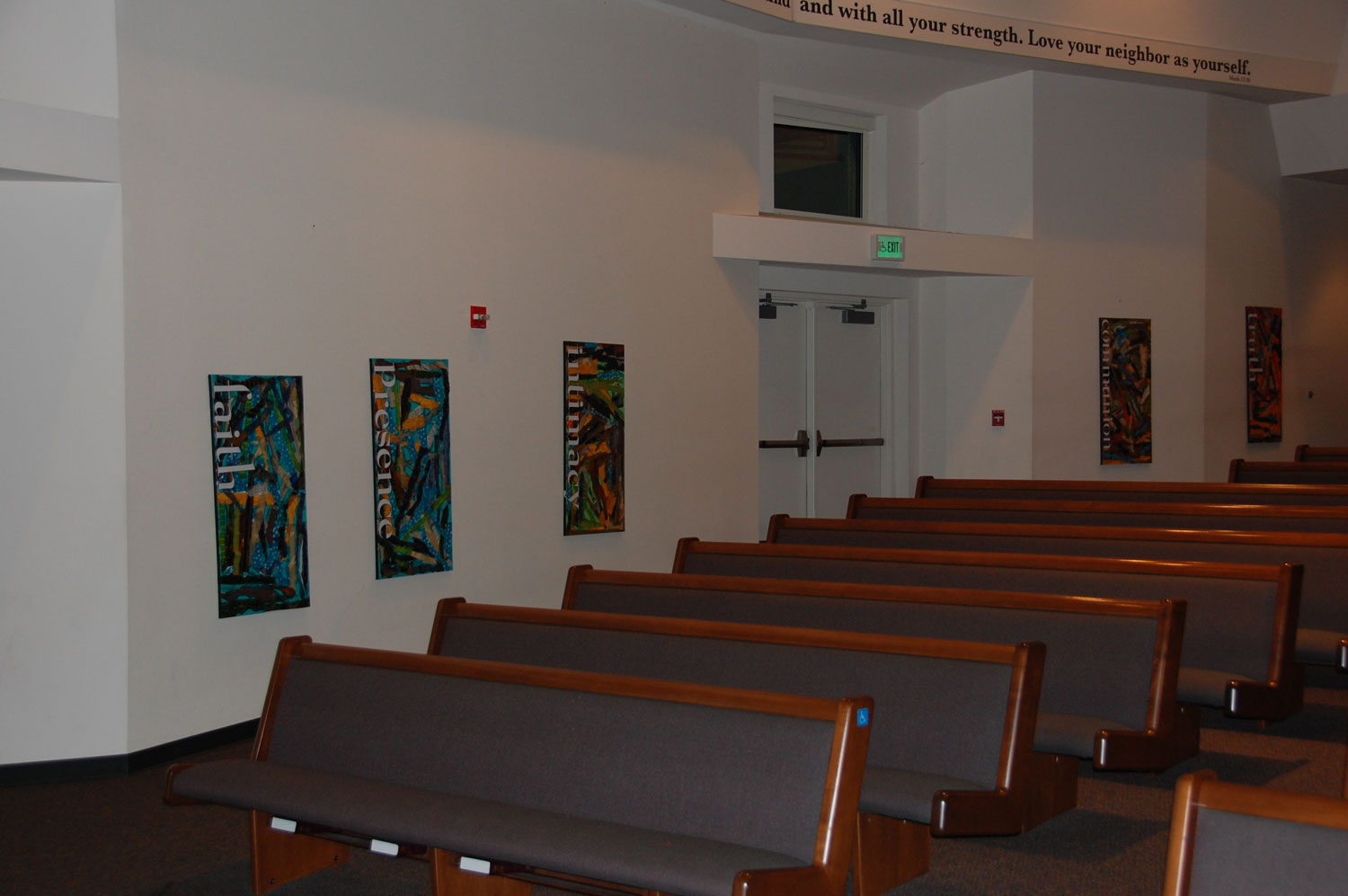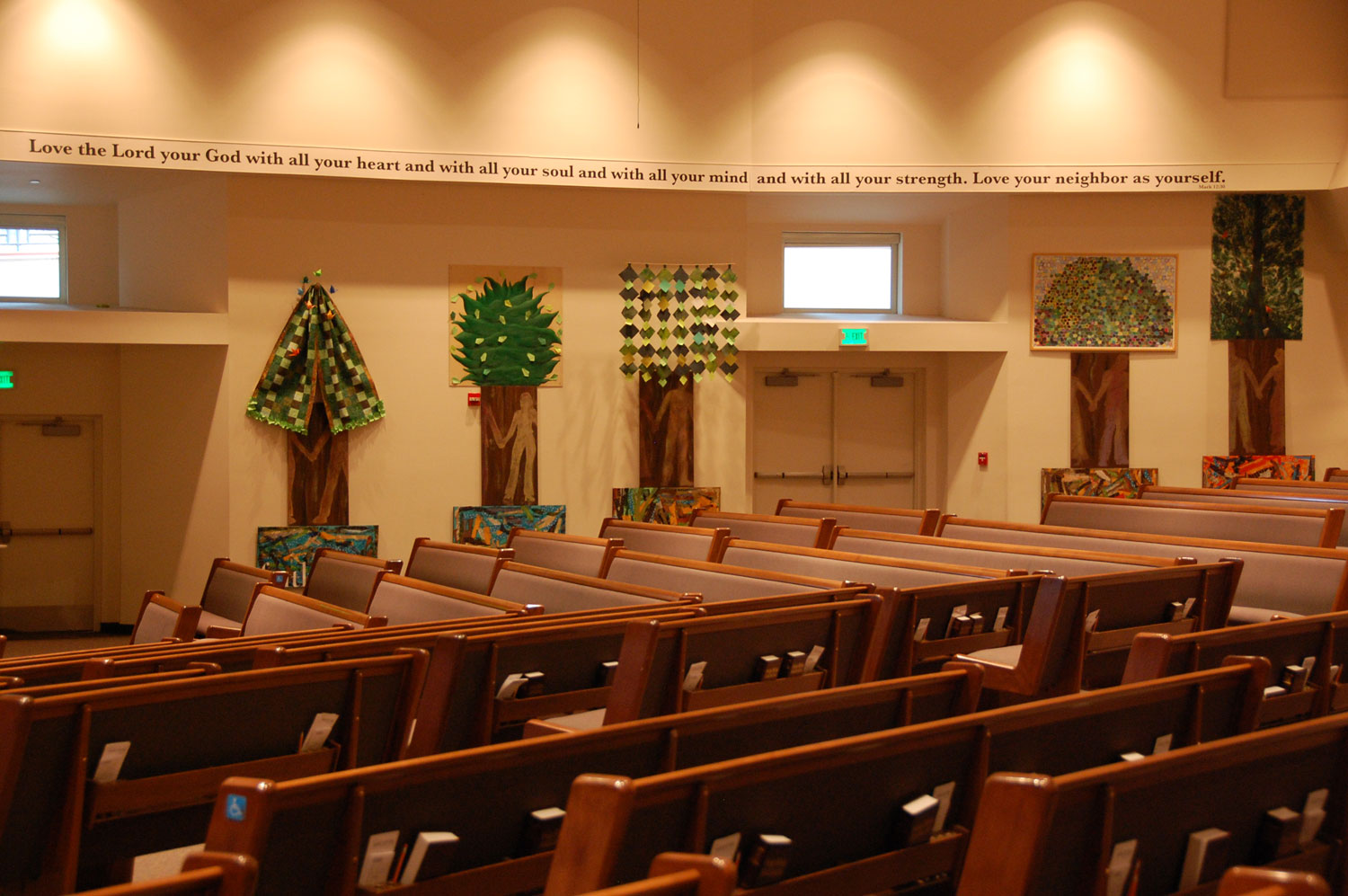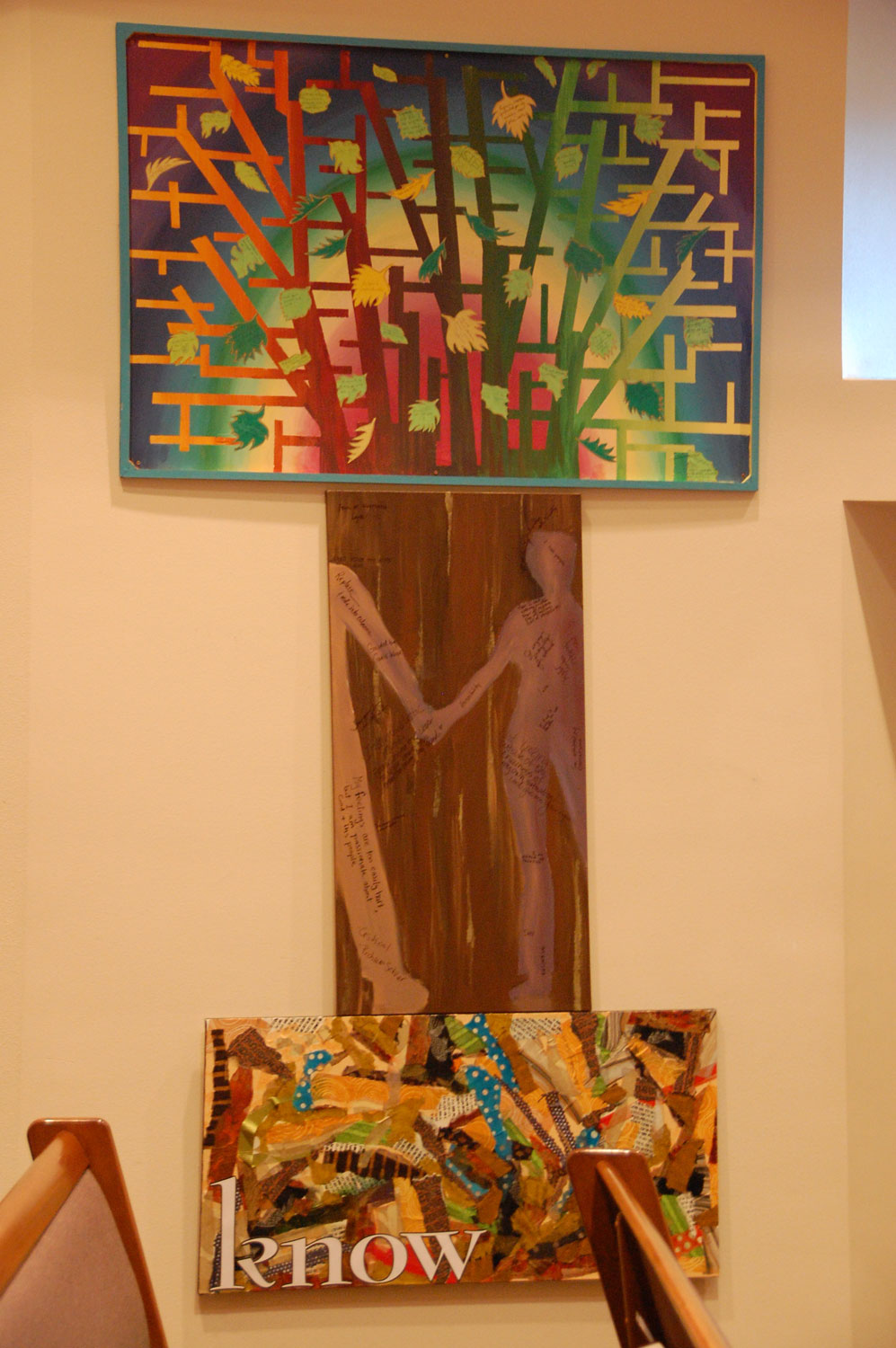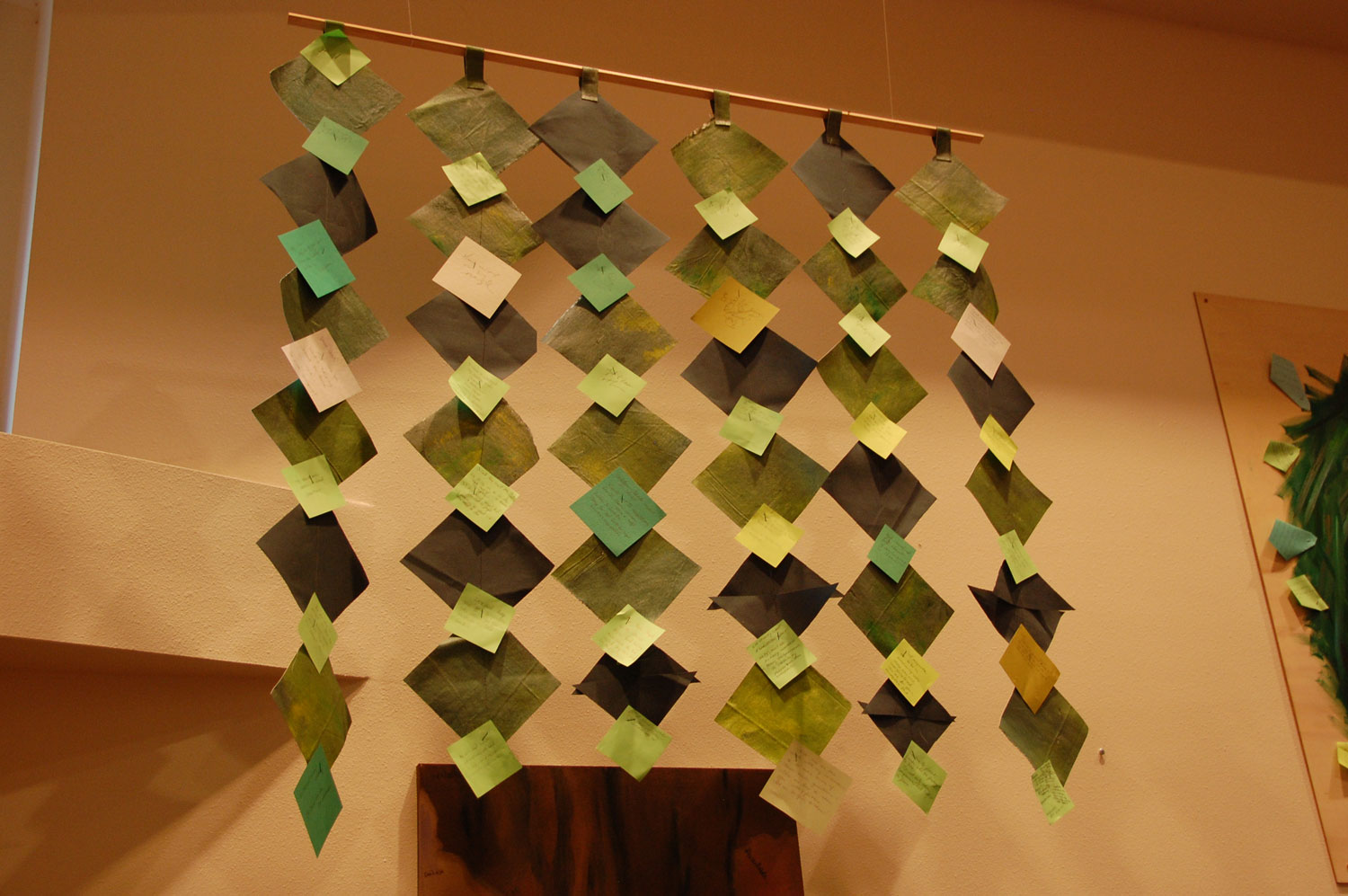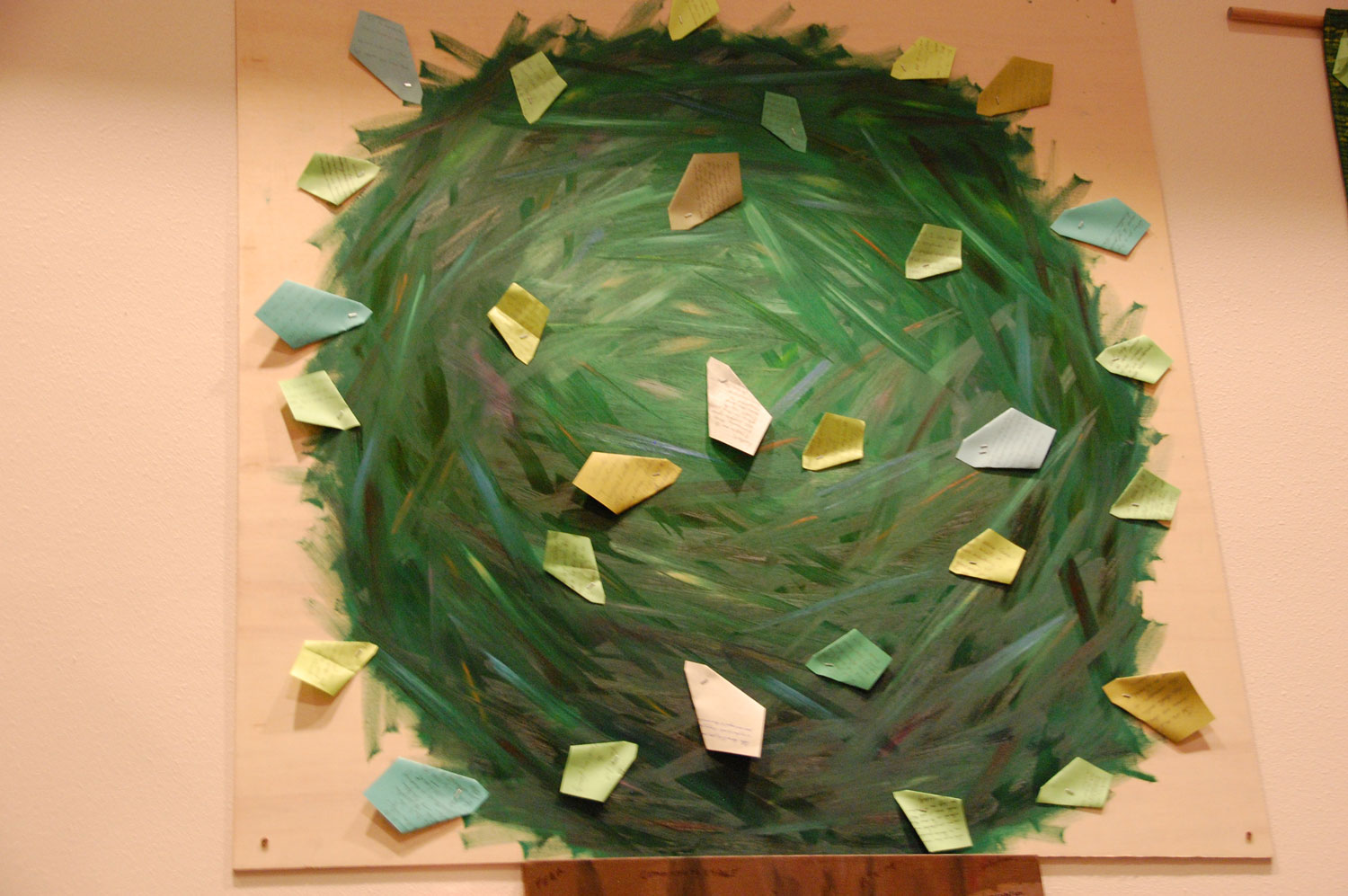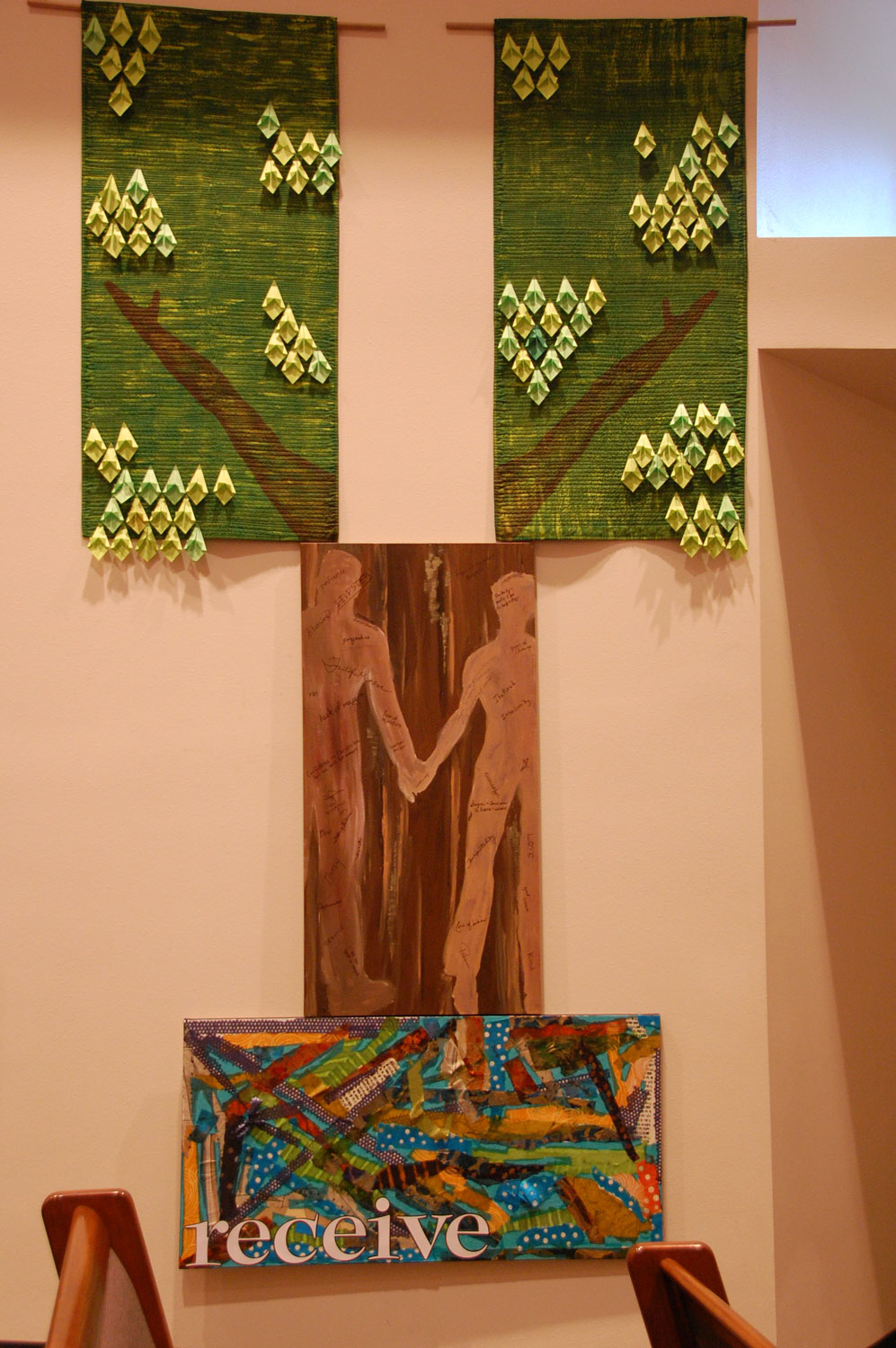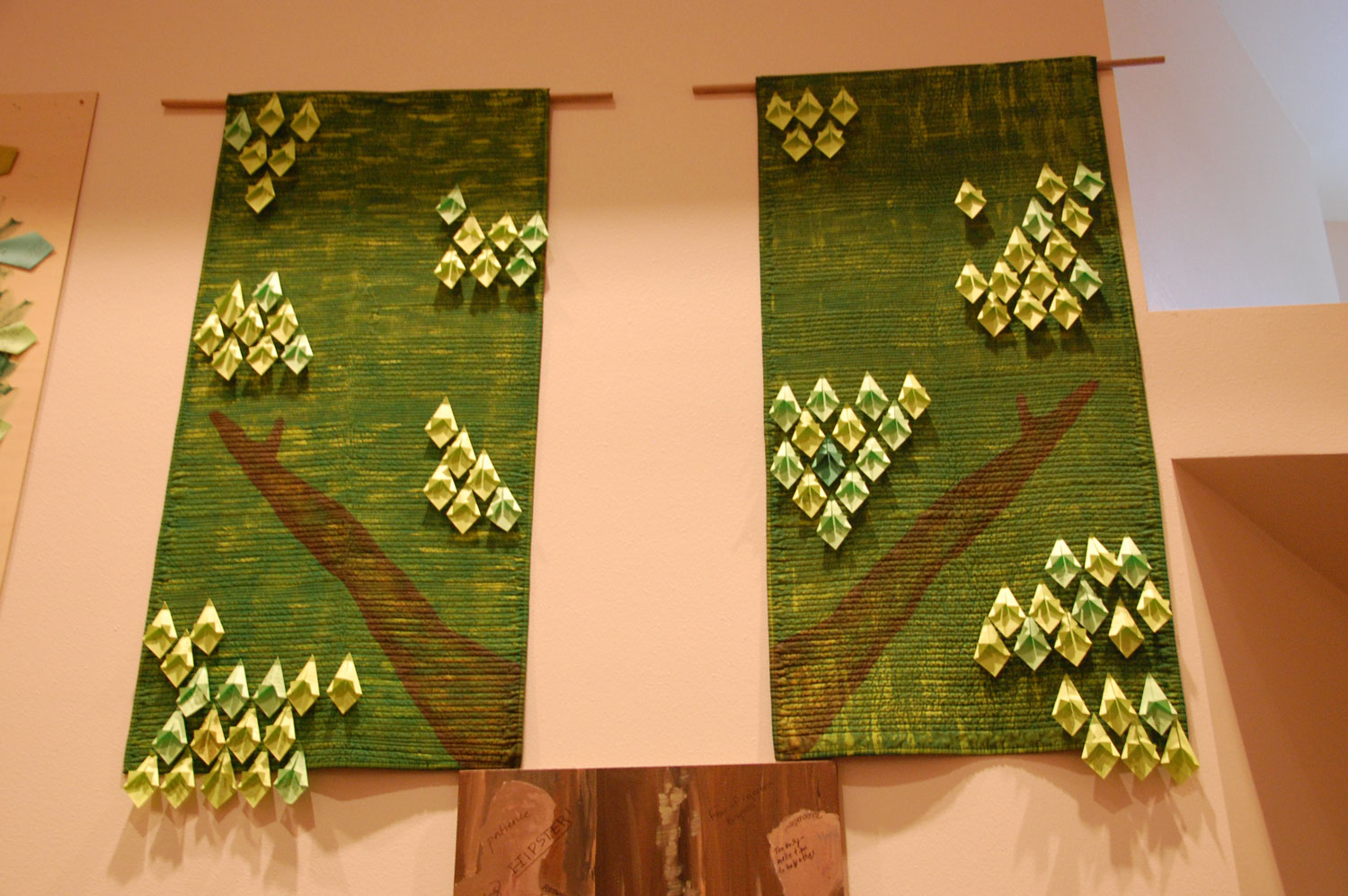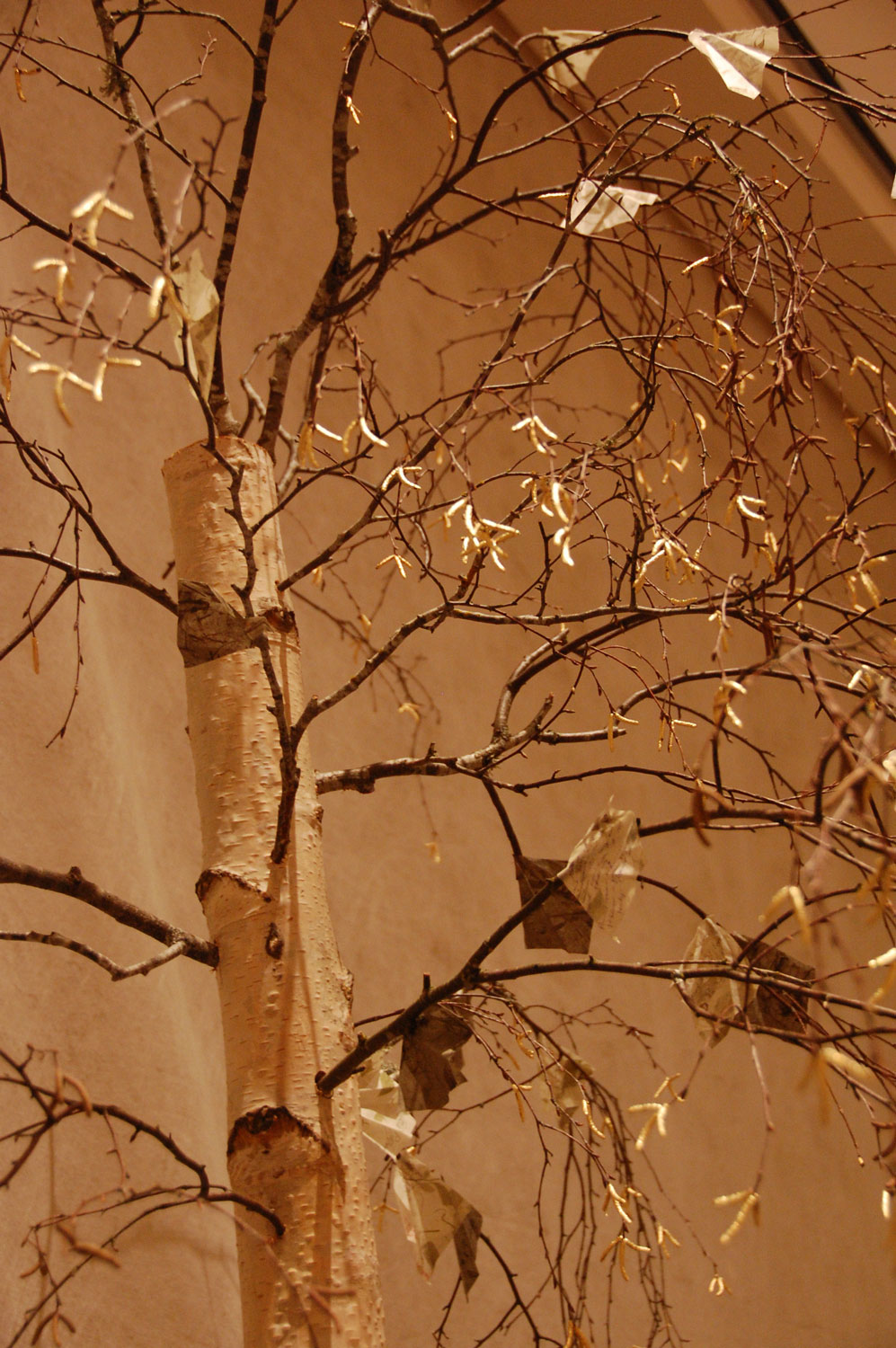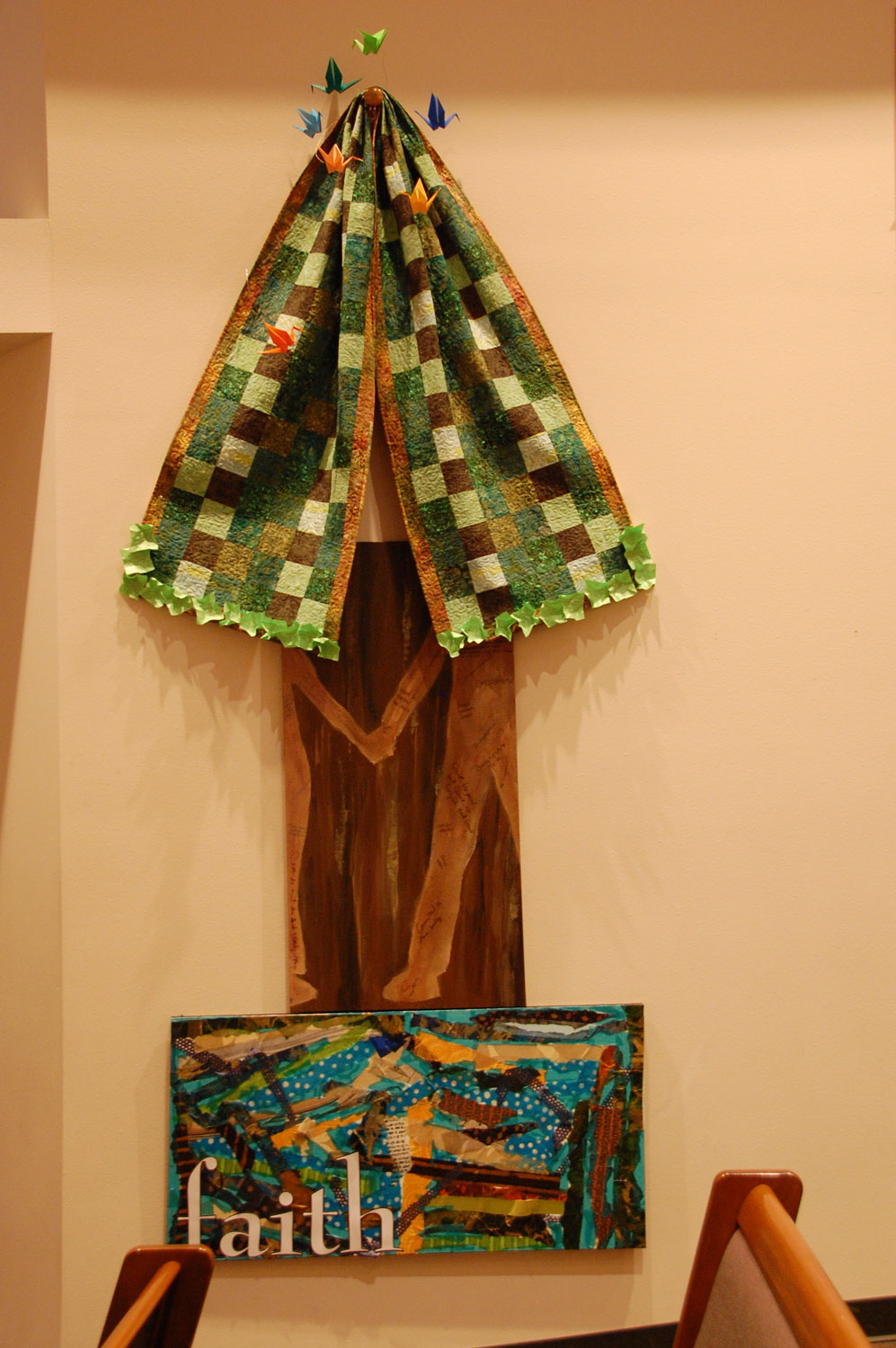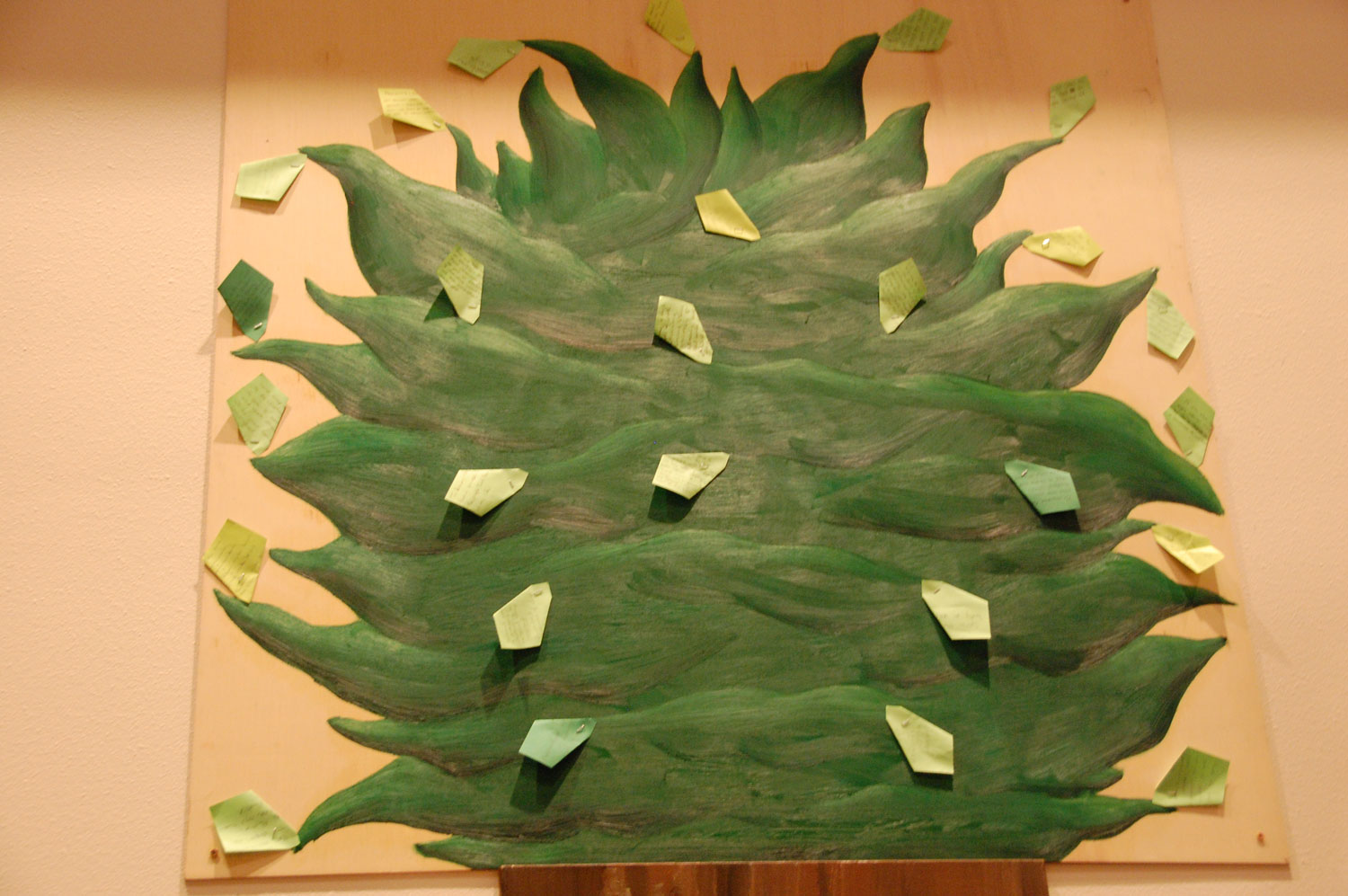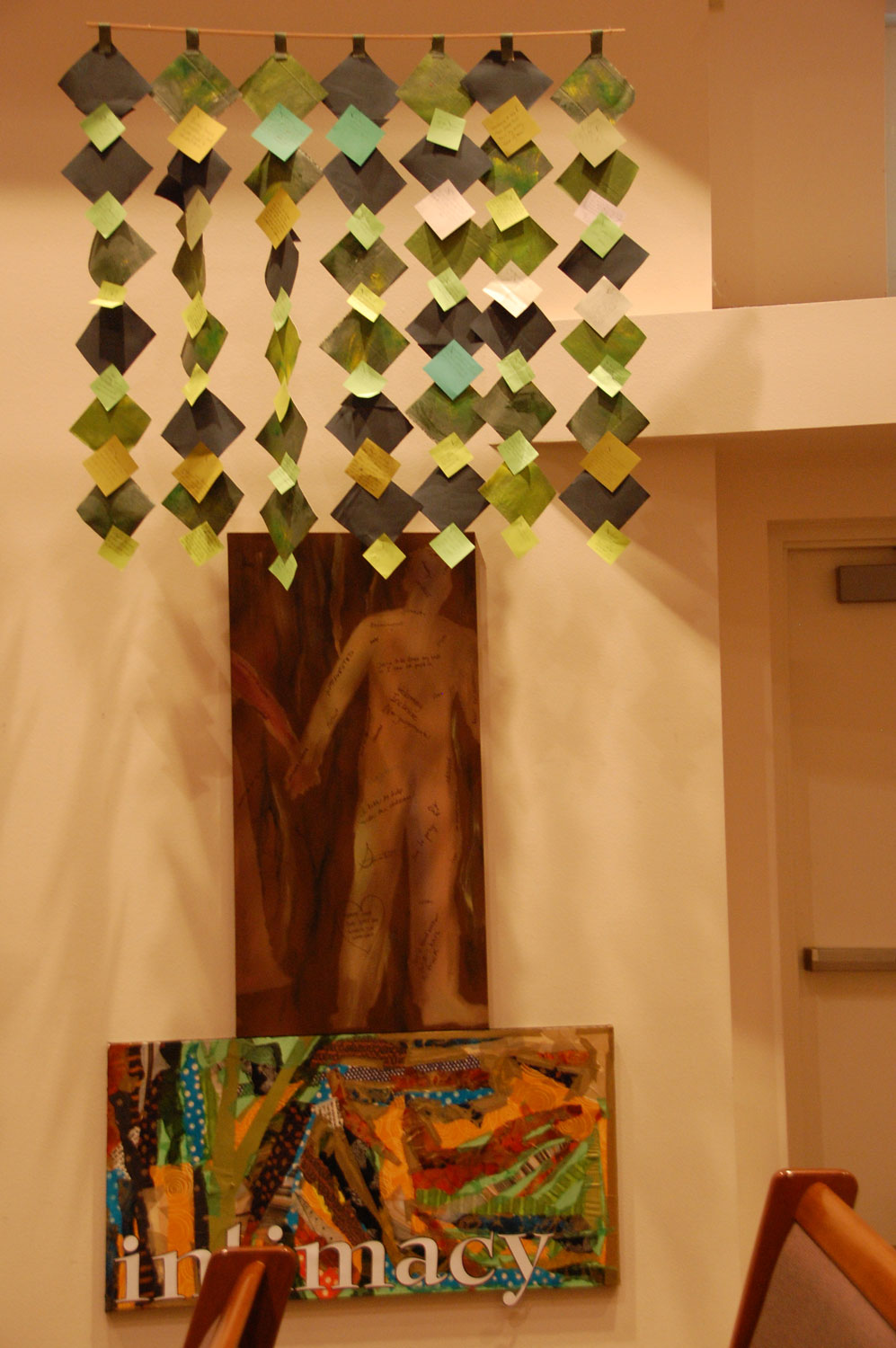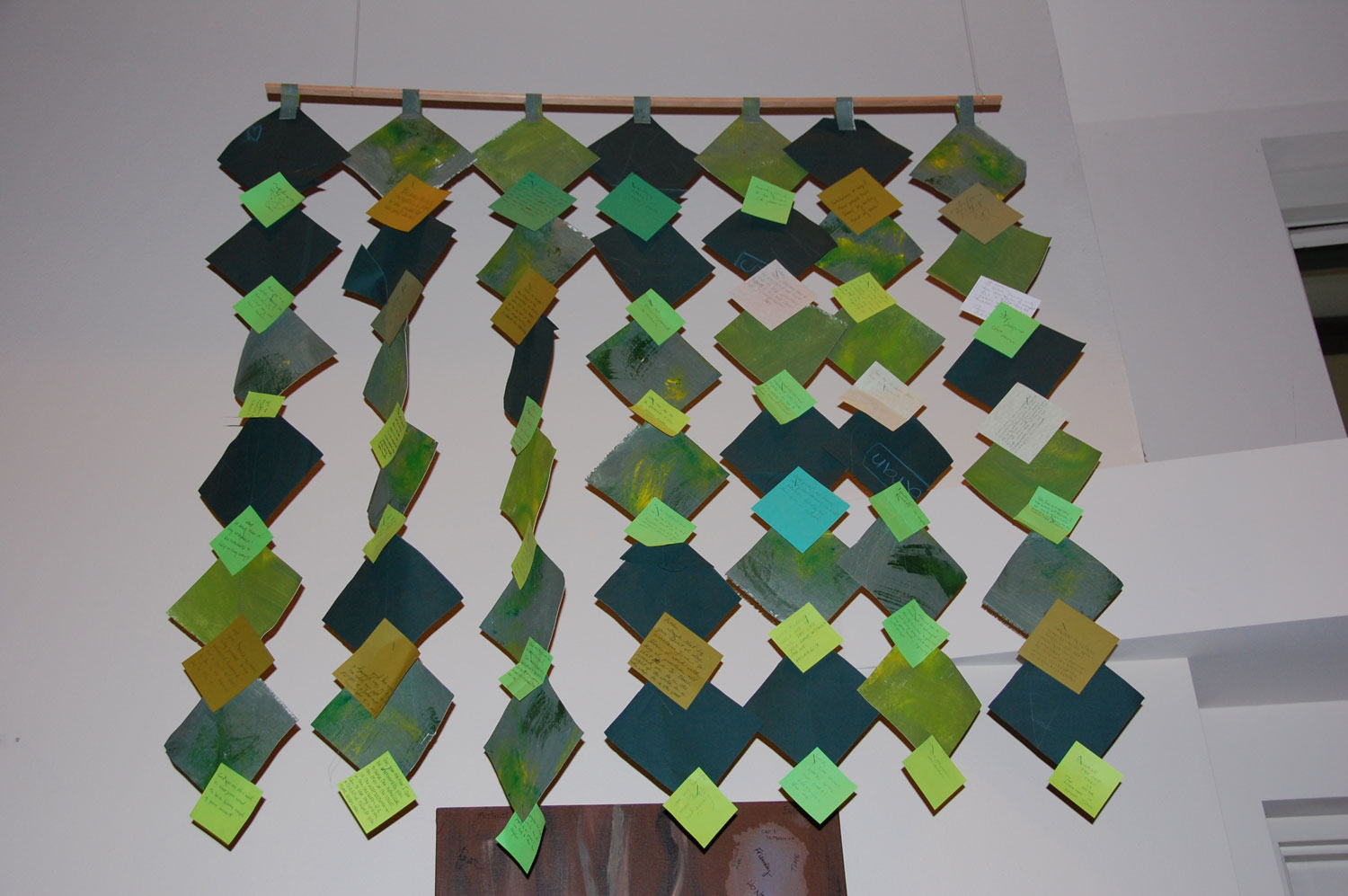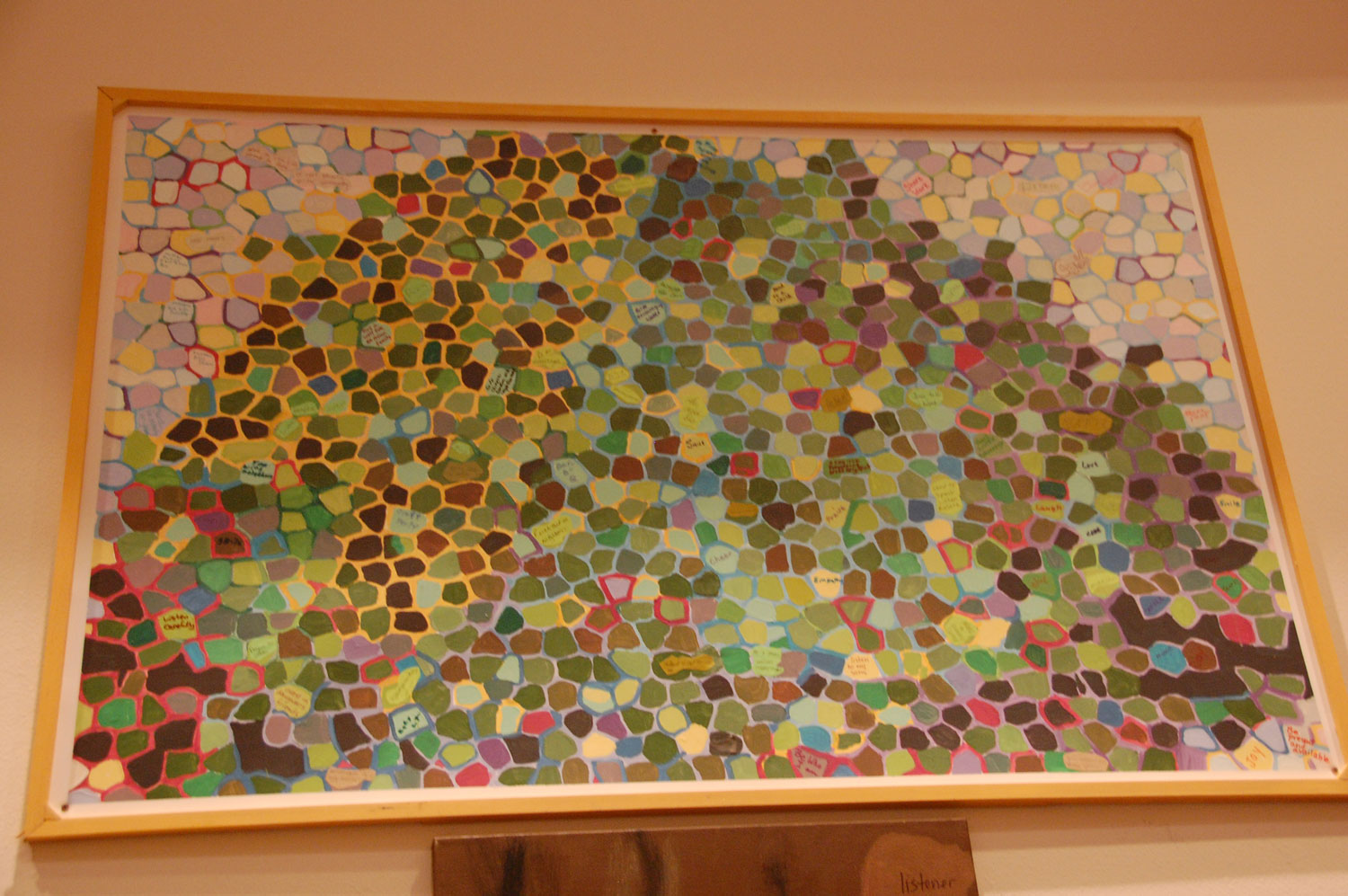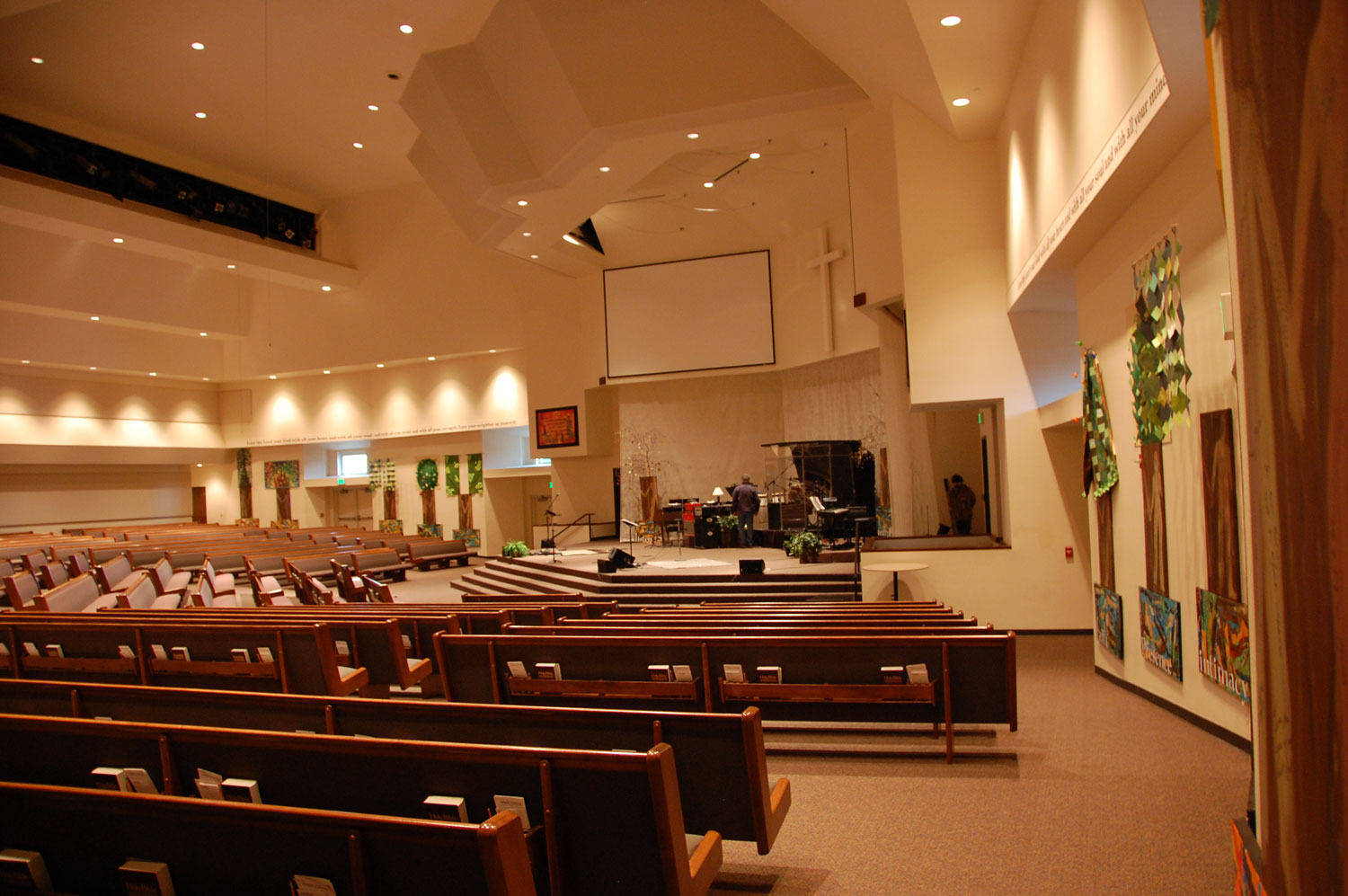The Trees Project
The Request
A young pastor prepared a series of sermons on faith, hope and love that he titled "The Postures Series." The sermons were meant to focus the mindset of the congregation for the coming year. He asked me to come up with a way to engage the congregation in a time of reflecting immediately after the sermon. The following project was created for this series.
The Project
1. The first week the pastor spoke on faith. He asked us to consider if there were portions of our lives we were "hiding" from God. Things we didn't want Him to touch or heal. We passed around baskets of torn strips of paper (with high metaphorical value), and asked people to take one. We gave them time to sit with the question and then asked them to write something they were withholding from God. Many people found that the papers they were holding helped them to make connections with something the Holy Spirit had brought to mind during the sermon. For some, dots meant isolation, for others, connection. Colors and shapes on the papers reinforced and reminded them of things the Holy Spirit had begun stirring in them as they listened to the pastor speak. They wrote what they had been withholding from God. When they were ready to release it, we asked them to come forward and place them on canvases (that had been sprayed with temporary adhesive). This was a beautiful time, many people knelt as they pressed their papers to the canvas. It was quiet even though we had 400+ people in each of two services.
A canvas when the congregation was done with it.
Canvases after my little team of artists had afixed all papers with permanent adhesive (being careful to leave each paper where it had been positioned), added colored tissue paper and white key words from the sermon.
There were twelve canvases in all. For four weeks they hung vertically as beautiful reminders to allow God to heal us and make us whole. Later these canvases would be turned width-wise and used as "roots" for our symbolic trees. Faith is the root that connects us to the Father and everything grows from that.
2. The 3rd week the pastor spoke on love. We were to think about our congregation: what we bring to it, how we love each other, the hurts we have experienced as well as the healings. My team had temporarily joined canvas panels and painted them in browns. They then added painted figures holding hands. We asked the congregation to consider what they give and take from the group and write those things on the canvases in black markers. After the services we unscrewed the panels. These panels became the trunks of our symbolic trees. Love helps us to stand firm, weathering the storms.
3. The 5th week the pastor spoke on hope. We distributed small pieces of green paper and asked the congregation to commit to bring hope to someone this week. We gave examples of ways to connect in their neighborhoods and places of work, and asked them to think of something manageable that they could do and were willing to do now. We collected those papers and gave them to a team of 6 artists to use as leaves for tree tops. That week we hung all the pieces together as trees and explained the project--that faith is the foundation, love is the strength and hope is the fruit.
Jo Reimer's tree tops were kinetic. The leaves rustled and moved as people passed by them.
Michelle Winter's tree tops incorporated quilting in as symbols for comfort and safety.
The Debrief
This was the first worship art this church had done together, and we wanted to make sure we had given them as much information as possible for them to own the experience. As soon as the finished trees went up, we walked them step-by-step through the process they had experienced to help them debrief.
Following is a transcript of the talk I gave to debrief the congregation on this project:
There are so many ways to worship. My husband worships when he experiences God’s creation. When he walks through the woods, he worships. I have met God in the woods, too, but it takes a great deal of focus for me to not be distracted by bugs, and other ookey things. I enjoy walking through the woods with my husband because I love him and I know that the woods are particularly meaningful to him. In church we so often offer worship opportunities that are particularly meaningful to auditory learners and those moved by words. That is a good thing, but there are some people who struggle with it. They sing along side us out of love, but struggle to remain focused. With this project we hoped to open up some worship opportunities for visual learners, those who hear better when moving a little bit, and for those who understand the world more metaphorically or symbolically. We also wanted to incorporate some silence into the after-sermon so that people could begin to process what they’d heard and invite the Holy Spirit into their ruminating.
The first two weeks of the postures series were about Faith. 800 people reflected on how we listen to God and how we shut Him out. 800 pairs of hands holding fragments of paper came forward and we made collages together. These collages are symbolic of the way God takes our pieces and then He works in us to make us whole. But He doesn’t stop there, and so we didn’t either. We have turned the collages so that they function as the root base for our trees. The roots reach deep into Living Water and that alone enables the tree to be healthy.
The second two weeks of the postures series were about Love. We expressed our hurts, our brokenness to each other, the things that keep us from truly engaging with one another, as well as the beautiful things we bring to this body. The words on the canvases are raw and honest. The way we accept each other, support, encourage and love one another, that is the trunk that holds the top. It is the part that experiences the storm and stands firm.
The last two weeks of the series were about Hope. We asked the congregation to write down ways they could be missional this past week on bits of green paper. Six artists incorporated those “ways we reach into the community” into their tree tops. Each artist has lived with this charge for the past few weeks, thinking about how to portray “hope” and “incarnational” and “missional” into their pieces. For me, when I think of bringing hope to the community I think of sharing comfort, sharing home, sharing Life. I used quilts for the basis of both of my tree tops because quilts are about comfort and home. I know that Carol Ann Mendez was really focused on portraying God’s constancy and faithfulness and so she chose to paint evergreens reaching into the sky. I love the symbolism in Jo Reimer’s leaves that rustle. Jo incorporated sound and movement into her pieces. If you think about it, the sound of wind in the leaves is a beautiful and powerful sound. Isn’t that who we are as we reach into the community? Leaves don’t move on their own, they respond to the wind. Kathryn Boettcher’s pieces are a visual party. I love her use of color. It reminds me that we are this joyful kaleidoscope of people reaching out to more bits of broken glass, gathering all the pieces together in Love. I wish you could see Adrienne Cedergreen paint. She channels Joy. It is the most amazing thing. She gets very quiet, and then she engages in a silence that you can feel from several feet away. And then beauty begins to flow from her brush. There is an ebb and flow of concentration and what I can only describe as “tidal worship.” And it comes out as boldness. Her pieces have an element of “this is who I am and I accept who I am in Christ.” I can’t take my eyes off her pieces, there is such confidence and beauty in them. Constance Lee Adams is a sculptor and the dedication she put into her pieces is beyond description. She teaches me so much about working “as unto the Lord” for no other reason than this is who God made her to be and she finds joy in obedience. So many people here are doing the same thing, working as unto the Lord, carrying Christ with them into the community without being a part of a program and expecting no recognition, just being obedient to who God made them to be.
So we hope that you will take the time to ask the Holy Spirit what He has to say to you and listen for the symbolism relevant to your life where you are right now. Thank you to all of you for your support of this project, for your patience with this project. Thank you for being open to God and to one another in love.
Kathryn Boettcher's colorful tree top with a trunk from the Love sermon and a Faith collage turned horizontally.
Constance Lee Adams' gold leafed birch tree top with some of the "leaves" collected from the congregation.

